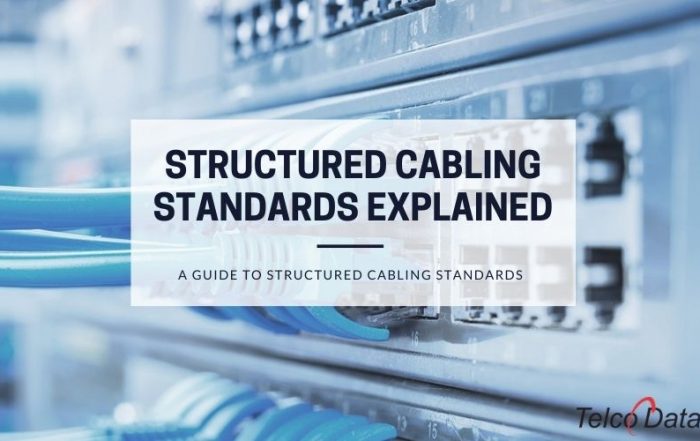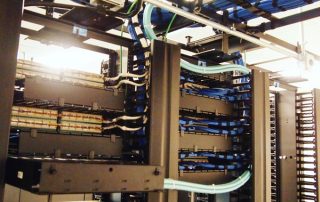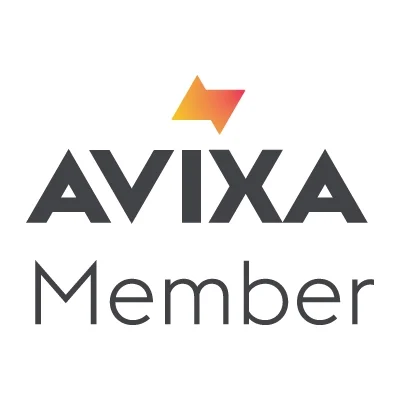Many network administrators keep hearing this thing that their network is down because of cabling or some other reason. Various cabling researches indicate that in many scenarios, the network is down on account of low-quality cabling systems.
And installing newly built structured cabling systems can eliminate much of network downtime. Another vital factor that should be taken into account is that the structured cabling system technology, though it outlives most other networking cabling components, represents about five per cent of the total network investment.
The structured cabling technology is the only one that has to be installed to contend with the requirements of telephone & data communications now and in the coming future. It is a type of cabling system that gives you an extremely “structured” approach to the complete cabling system – a single-mixed media network system that controls all data traffic such as voice, data, and video & even big complex building management systems.
Simply, it could be described as a cabling system that comprises a set of transmission items, applied with engineering design rules that helps the user to apply voice, data, & signals in such a manner that maximizes data rates.
Structured cabling system technology divides the complete infrastructure into the controllable blocks and then structured cabling system attempts to connect these blocks to produce the high-performance cabling network systems that almost all companies now rely on.
Every structured cabling system is unique. This is because of variations in:
- The architectural structure of any building, which houses the cabling installation.
- The cable & connection items.
- The features and functionalities of the cabling installation.
- The types of equipment the cabling installation will need – present & future.
- The configuration of an already installed cabling system (upgrades & retrofits).
- Customer requirements & manufacturer warranties.
The techniques we use to complete and control cabling installations are relatively standard. The standardization of these cabling installations is Important because of the need to ensure acceptable cabling system performance from increasingly complex cabling arrangements.
The U.S. cabling industry and cabling manufacturers accept the American National Standards Institute (also known as ANSI) – in conjunction with the EIA/TIA, as the responsible company for giving & maintaining standards & practices within the cabling profession. It has published a series of cabling standards to design, install, & maintain cabling installations. These instructions are pretty helpful in ensuring a proper cabling installation.
Benefits of Structured Cabling Standards
The benefits of structured cabling standards are as follows.
- Consistency of cabling design and installation.
- Conformance to physical & transmission line requirements.
- A basis for examining a proposed system expansion & other such changes.
- Uniform documentation.
The cabling industry-standard term used for a company’s network installation that serves a relatively tiny area (like a structured cabling installation serving a company’s building) is a local area network (LAN).
Structured cabling system installations typically has: entrance facilities, consists of vertical and horizontal backbone pathways, vertical & horizontal backbone networking cables, horizontal pathways, horizontal networking cables, work area outlets, equipment rooms, telecommunications closets, multi-user telecommunications outlet assemblies (known as MUTOA); transition points, & consolidation points.
The entrance facility has the cabling components or equipment needed to give a means to connect the outside service areas to the premises cabling. This can have service entrance pathways, networking cables, connecting hardware, circuit protection devices, & transition hardware.
An entrance facility of the structured cabling system houses the transition outside the plant cabling to cabling only approved for intrabuilding construction. This involves transition to fire-rated networking cable. The entrance facility of the cable is also the network demarc between the SP & customer premises cabling (if needed).
What Are the Main Structured Cabling Standards?
The main structured cabling standards are as follows.
The ANSI/TIA-568
In the mid-1980s, consumers, vendors, and the high profile manufacturers became a bit concerned about the lack of specifications relating to the telecommunications cabling system. Before then, all communications and network cabling was proprietary & often suited to a single-purpose use.
So, under the guidance of the TIA TR-41 group & associated other subcommittees, the TIA & EIA in the year 1991 published their first ever version of the Commercial Building Telecommunications Cabling System, which was called as ANSI/TIA/EIA-568 or sometimes known as as TIA/EIA-568.
Computer Communications Industry and Association (known as CCIA) at that point of time asked the EIA to build a specification that would encourage structured & standardized cabling systems.
ANSI/TIA-568-C Purpose & Scope:
The ANSI/TIA/EIA-568 standard was built and has evolved over the years into its current form for many simple reasons:
- To build a network cabling specification that would support more than one vendor application
- To give direction of the design of all the telecommunications equipment and cabling items that are intended to serve commercial companies.
- To specify a structured cabling system generic enough to support both voice & data
- To establish technical & performance guidelines and give some basic guidelines for the planning and installation of structured cabling systems technology
The ANSI/TIA-568-C standard addresses the following things:
- Subsystems of the structured cabling system.
- Minimum requirements for the telecommunications cabling.
- Installation methods and networking practices.
- Connector & pin assignments.
- The life span of a telecommunications cabling system technology (which should exceed 10 years)
- Media types & performance specifications for the latest horizontal and backbone cabling.
- Connecting the hardware performance specifications
- Recommended topology & distances
- The definitions of cabling elements (such as horizontal cable, cross-connects, telecommunication outlets, etc.)
The ISO/IEC 11801
The ISO/EIC is the international standard followed worldwide for information technology systems. As its name suggests, it standardizes and regulates structured cabling systems within an IT network. The ISO standards are strictly reviewed every five years, with the last major review & revision taking place in the year 2017.
Section 11801 deals with all the general standards for network cabling in any commercial building. The section covers data, voice & video services for cabling, along with some specifications for both copper cabling & fiber-optic cabling.
Cabling Standards During Installation
When any data-cabling company installs the latest structured cabling system, the specialist should be following the ANSI/TIA & ISO/IEC standards for the cable layout and physical installation of the structured cables.
It’s essential that the cable specialist carefully lays out the cable & necessary equipment for your new system with future use in mind. If you ever include new technology or any new cabling system, you need to ensure it all works.
This is one main reason why the TIA cabling standards in particular mandate that cables be backward-compatible. That clearly means any latest cables have to be able to support & work with an older cabling system. Everything within the specifications of these cabling standards ensures performance & reliability.
Final Thoughts
Standards for structured cabling technology help both the data-cabling companies and companies or businesses that want to install and integrate a system of their own.
The ANSI/TIA & ISO/IEC standards help ensure that company owners and their employees’ networks offer the best performance possible & have all the capabilities to keep up with the day-to-day requirements. Whether it is for voice, video or just data use, structured cabling system technology is an excellent investment for any company or business.
FAQs About Structured Cabling Standards
What are some of the major structured cabling standards?
The ANSI/ITA-568 and ISO/IEC 11801 are the two names you need to know because these two are the main structured cabling standards. The way cabling and equipment are laid out & organized in the structured system is governed by some certain stringent rules and regulations.
What are the 6 components of structured cabling?
Structured cabling system consists of six essential components. They are horizontal cabling, backbone cabling, work area, telecommunications closet, equipment room & entrance facility.
What is the international standard for structured cabling?
ISO/IEC 11801 is the international standard for structured cabling – This International standard structured cabling is suitable for a wide range of applications (analog & ISDN telephony, various data communication standards etc.
How does structured cabling work?
In a structured cabling system technology, a series of patch panels & trunks are used to make a cabling structure that allows for hardware ports to be integrated or connected to a patch panel located at the top of the rack. Structured Cabling runs patch cables (or “jumpers”) directly to and from the hardware that needs connectivity.
Why is structured cabling important?
Structured cabling standards help organizations and businesses to install wiring in such a way that prevents the messy cabling tangles by keeping the whole wiring infrastructure organized and flexible.







